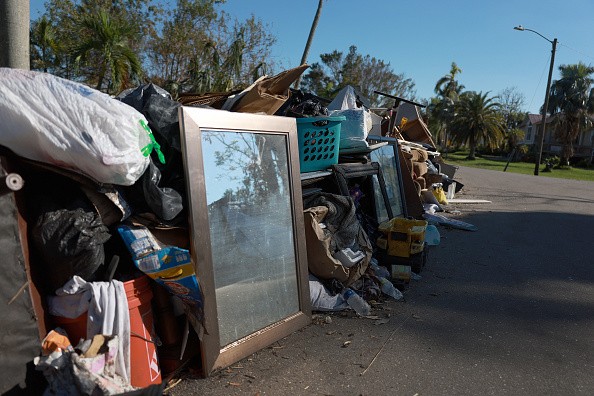A further issue arises when Ian floods recede. Florida residents are in a race against time as they laboriously clean out their houses, throw out mountains of wet possessions, and deal with their next major issue: the sneaky development of mold.

It smells like moldy mud. Around the light fixtures, black rings can be seen developing, and in one spot where the roof appears to have been raised, the drywall is wet.
Seeing the Mold
Returning home after #HurricaneIan? Mold can grow on building materials that have been wet for more than 48 hours. Fast & proper clean-up is essential to avoid possible health issues.
— FL Division of Emergency Management (@FLSERT) October 9, 2022
⬇️ Follow the tips below to get rid of mold in your home.https://t.co/S49ep6ksE8 pic.twitter.com/FxiO1v76Pn
John Day surveyed the extent of the water-filled damage Hurricane Ian had caused to his two-story home on Little Gasparilla Island, a barrier island in southwest Florida, and declared, "This is the worst." As he made his way cautiously to the back of the home, he told NPR, "I don't know what mold it is, but it looks like black mold, and it's covering the entire bathroom ceiling.
Hurricane Ian Aftermath
When Hurricane Ian landed in Florida on September 28 as a raging Category 4 monster storm, it inflicted a terrible blow to hundreds of thousands of houses. Many homes quickly became inundated by several feet of water due to storm surges of more than 12 feet. Additionally, residents of the barrier islands off the southwest coast were harmed. Overflowing rivers that breach their banks in inland regions inundate homes with surging floodwaters and cause equally severe devastation.
All that was left of the place that the evacuees formerly called home was a floor to ceiling damp jumble of musty-smelling, mold-covered buildings. They now have the difficult chore of starting afresh and the hassle of taking up the severely damaged areas, along with their fellow Floridians. The latter weathered the hurricane in their houses.
Molds Everywhere
Cape Coral homeowner Jim Sanville told WMTW-TV, "The tile floors had this black, slimy sludge on them, and the carpets - you walk over them and squish, squish, squish, and the stench was fairly horrible." "The mold had begun to multiply."
According to Jeff Rioux of the Gulf Coast city of Bonita Springs, "anything that got water is starting to mold." To rescue the house and save it from suffering more harm, "we're ripping off all the drywall from two feet up."
He was grateful for the few days of pleasant weather that followed Ian and the borrowed generators that let him run fans around the house to slow the mildew growth.
One thing is undeniable: Mold specialists warn that time is essential.
According to the Federal Emergency Management Agency, mold spores may quickly spread unnoticed throughout a flood-damaged property by settling in damp areas for 24 to 48 hours, including baseboards, cabinets, even linens, and behind the walls. Believe it or not, experts claim that the first locations people typically detect mold are sneakers and other forms of footwear left lying around the house.
Additionally, it swiftly infiltrates after spreading.
Day said that at least one of his home's ceilings had been infested with mildew in less than a week following Ian's assault.
What To Do With the Molds?
The Centers for Disease Control and Prevention (CDC) advises flood victims to "totally dry everything, clear up the mold, and make sure you don't still have a moisture problem" if their home has been locked up for many days after flooding.
As temperatures along the southwestern coast rose into the high 80s in the days after Ian made landfall in Florida, the issue was only made worse: "Days of Florida heat accelerated the development of indoor mold on walls," reinsurance broker Gallagher Re noted in its initial post-Ian assessment report.
Related Article : Exposure to Major Disasters Can Cause Long-Term Mental Health Problems
For more climate and weather updates, don't forget to follow Nature World News!
© 2025 NatureWorldNews.com All rights reserved. Do not reproduce without permission.





